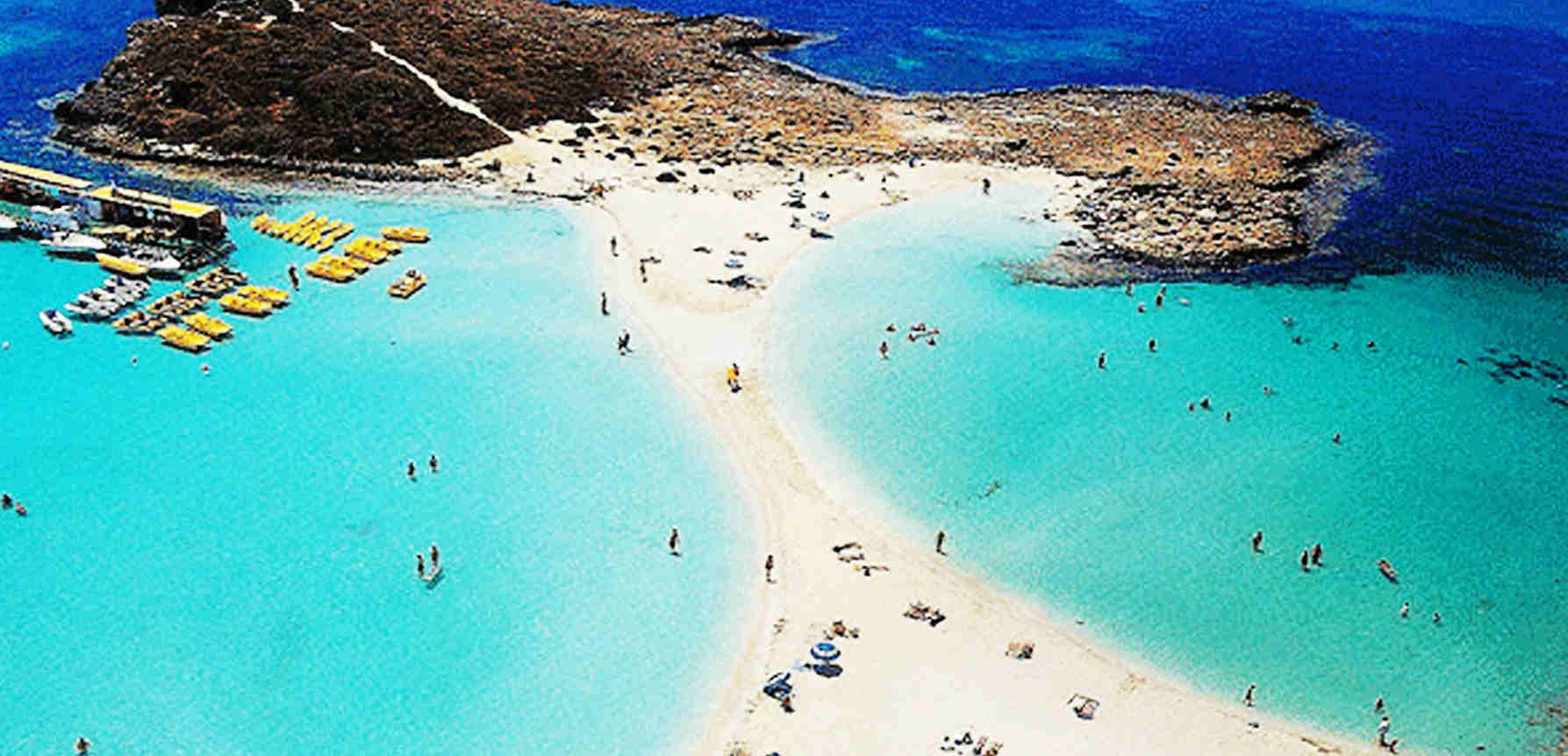Ayia Napa
Ayia Napa is a resort at the far eastern end of the southern coast of Cyprus, famous for its sandy beaches. The name Ayia Napa is derived from a Venetian-era monastery of the same name, located in the centre of the town, next to the square that today is the clubbing centre. The word “Ayia” (Agia) means “holy” in Greek. “Napa” is archaic and means “wooded valley” or dell. In ancient times the area surrounding the town was covered with thick forest. Geographically, Ayia Napa lies near Cape Greco at the eastern part of Cyprus, just south of Famagusta and forms part of a larger area known as Kokkinochoria. Ayia Napa is about 8 kilometres (5.0 mi) from Protaras, a town that has recently seen similar development, but still manages to remain low-key and remains more favourable for families and Cypriot locals.
Ayia Napa attracts a large number of tourists and features a number of bathing beaches, on which water sports such as water-skiing, windsurfing, canoeing, scuba diving and speed boating are popular.
All beaches in Ayia Napa have been awarded the EU blue flag for their level of cleanliness and facilities. Cyprus, with 53 Blue Flag beaches, has three records:
- the most Blue Flags per capita in the world
- the most dense concentration of Blue Flag Beaches
- the most Blue Flag beaches and per coastline length in the world.
Ayia Napa Monastery is the best known landmark of the Ayia Napa area. It has a charm that represents a time when Ayia Napa was a sleepy fishing village. It seems that in ancient times, the location where the monastery and the village exists today, was covered by thick forest, visited only by hunters from the neighbouring villages.


